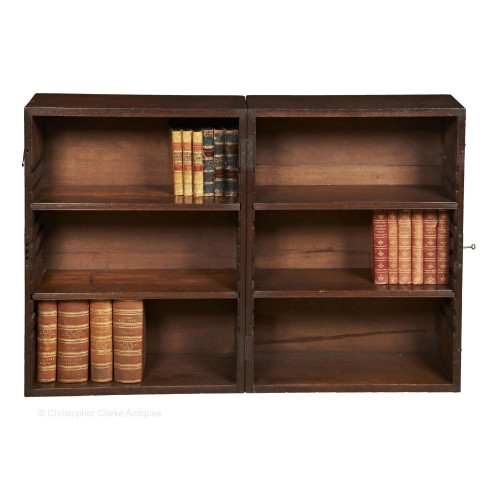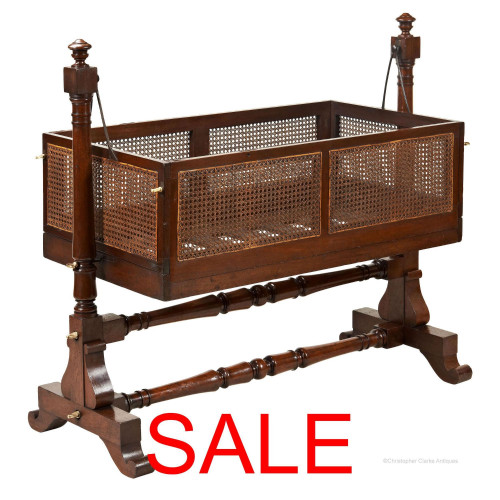Campaign Washstand
Campaign Washstand
82774
A teak and brass Campaign Washstand.
A washstand was considered a standard piece of furniture for an army officer to have and it was included by a number of makers in the set of campaign furniture that you could buy from them. They were also sold with wooden oval tubs that would be the packing case for the washstand. The top of the tub might also form the top of a table with a tripod base.
The washstand is packed down by unscrewing the brass finials to the top shelf which can then be removed. The brass standards that support the top shelf and separates it from the shelf below can then also be unscrewed and so on until all the parts are separated. The shelf boards are stamped with the number 2 to their underside and some also have an E marked.
This washstand has an associated washbowl with it and would be useful in a hallway to drop keys or hats etc. in with the two shelves below giving additional storage space. Late 19th Century.
Using brass columns with screw fittings to separate the wooden boards of shelves was first done by British campaign furniture makers in the early 19th century. It was a very practical way to make portable furniture and was quick and easy to dismantle and set up. By the second half of the 19th century, most of the main makers (JW Allen, Day & Son, Hill & Millard, A&N CSL etc.) advertised washstands made in this way and also produced shelves to sit on top of campaign chests. These two items of furniture are the most common made in this form but other types were also made. This catalogue shows these and some more unusual examples. The buffet is certainly an uncommon piece of campaign furniture and the four tier shelves can also be bracketed in this group. Given that this method of making campaign furniture means that the shelves are easily separated it also means that they are easily replaced. Although it is believed that oval Whatnots were originally made, true ones are rare. There are a number of washstands on the market that have had their top shelf replaced with one without a cut-out for a bowl to make them more commercial. Indeed, there is even a company making modern versions that to the untrained eye look period. We would advise all to check the age carefully before they buy. If the top shelf does not have a cut out, compare the wood of all the shelves to ensure that they are all original. Perhaps we shouldn't be surprised as this is any easy way to make furniture and brass with mahogany or teak is a classic look that has stood the test of time. Late 19th Century.
Dimensions:
Late 19th Century
Teak with brass columns
England
Campaign Furniture
RELATED ITEMS



























